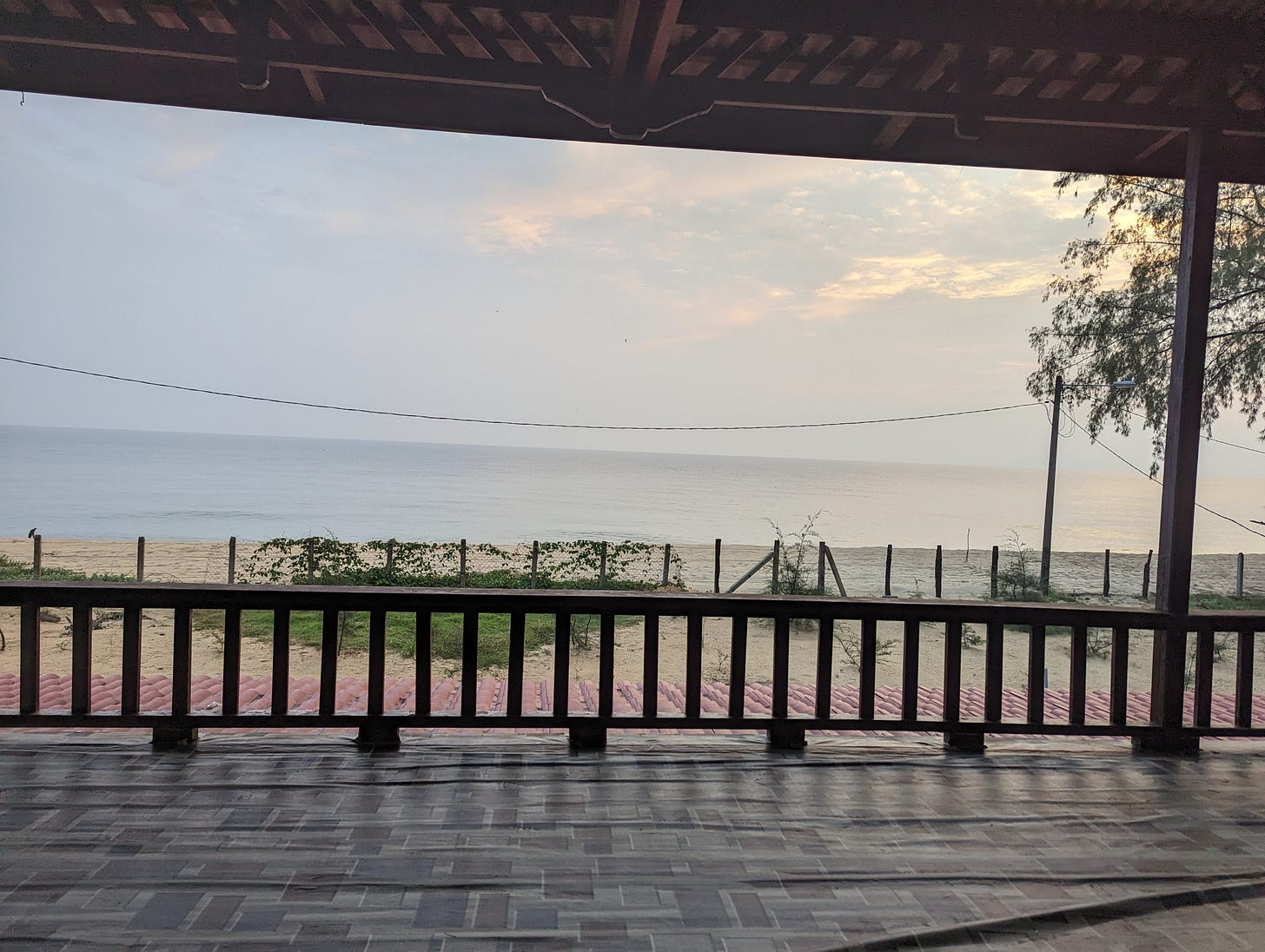Malaysia - A Pilgrimage for Forgotten Vietnamese History
On the Tragedies of Vietnamese Boat People, Tone-Deaf Tour Guides, and Haunted Mansions
Welcome back to the Chickpea and Carrot newsletter! In our last newsletter, we had a heart-pumping heist sneaking into some of the fanciest luxury resorts available in Bali to steal time with their exclusive, pearly white, and sandy beaches. We were excited to experience the delicious food in Malaysia, but we had important business to attend to first. Today, we will tell you a little bit about the country and then recount part one of our pilgrimage in Malaysia to visit an abandoned refugee camp Dang-Huy's father stopped at when escaping from the Vietnamese communist regime. While we try to keep our tales of our travels lighthearted, this newsletter will cover heavier topics about the end of the Vietnam war.
A Brief Introduction to Malaysia
Malaysia is one of our favorite countries ever! Bordering many other Southeast Asian countries, Malaysia is home to 34 million people and contains a surprising amount of ethnic and religious diversity resulting from a long history of foreign trade.

Generalizing, many Malays can trace their roots back to the indigenous Malay, Chinese, or Indian ethnicities. Among these people, you may find those who follow Islam, Daoism, Christianity, Hinduism, Buddhism, or other religions, though Islam is predominant. A long history of intermixing between the ethnic groups and cultures has led to new and distinct cultural features such as their food, tolerance towards other cultures, and multi-linguality. For example, a Chinese-descended Malaysian may speak Hokkien at home, learn standard Malay (Bahasa Melayu) at school, and use English to communicate in casual settings. In our opinion, this makes Malaysia an excellent place to be as a tourist or expat, as we found the country to be extremely rich with historic sites, interesting foods to indulge in, and kind and welcoming people.
Twelve Hours in Kuala Lumpur
In the few days after leaving Bali, our family was swept up in a whirlwind of travel. We took a short flight to Kuala Lumpur, Malaysia. Before we met up with Dang-Huy’s sister (whom we shall call Olive-nim) at our AirBnB, we got dinner at the airport food court. We were pleasantly surprised by the options and quality of food. At least two shops boasted vegetarian options that surpassed our American expectations of airport food in price and taste!

Our family arrived at our AirBnb and, after catching up with Olive-nim’s adventures around Southeast Asia, we quickly fell asleep. The next morning we had a quick breakfast of lentil curry, roti canai, banana, and butterfly pea tea, all courtesy of our chatty Airbnb host. Then we flew to Kuala Terengganu, a conservative city on the northeast coast of Malaysia, which we would use as a home base to charter a boat to Pulau Bidong. Pulau Bidong, or Bidong Island, served as a refugee camp for many Vietnamese fleeing persecution from communist Vietnam after the Fall of Saigon. In its “heyday”, the island hosted 40,000 Vietnamese despite only having a capacity of 4,500 people! Nowadays, the island has been reclaimed by the jungle and has seldom few visitors. It is a decaying testament to the tragedy of an aging population of people. Baba-nim was one of many Vietnamese who fled by boat, and he arrived at Pulau Bidong as his first stop on the way to America. More on that later.
To say that this was a lot to plan and do is an understatement! Getting from city to city was one thing, but chartering a boat to an abandoned and wild jungle island in a foreign country is another. Luckily, Olive-nim is extremely well-traveled, good at scheduling and researching itineraries, and just generally a fashionable badass. She made an incredible itinerary and got the contact of a local guide who had previously worked with National Geographic to take us to the island!
Kuala Terengganu
Our first point of order after arriving in Terengganu was eating lunch! Per our guide’s recommendation, we ate our feast at a Chinese restaurant. We devoured the baby bok choy, bihoon, dumplings, and remarkably sweet lemon tea with gusto. Though we’d only had three meals in Malaysia so far, we could see why their cuisine is so popular! Each meal we’d eaten so far was incredibly different than the last, and all had ingredients that tasted perfectly fresh.
Since we were staying a little out of the city center, we decided to stop for groceries at a local supermarket. The supermarket held aisles upon aisles of food and we had to exercise severe self-control to not buy multiple snacks, sweets, noodles, and produce. We only needed enough for two days, but with a store full of Malay food, the temptation was hard to resist.
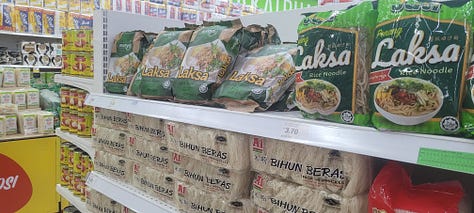
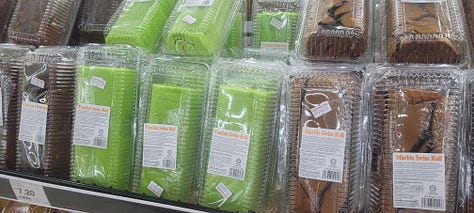
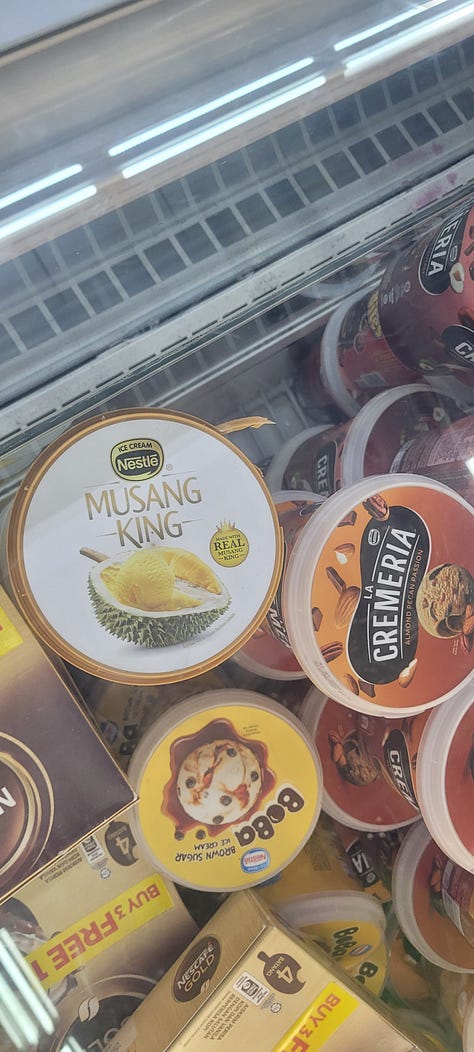
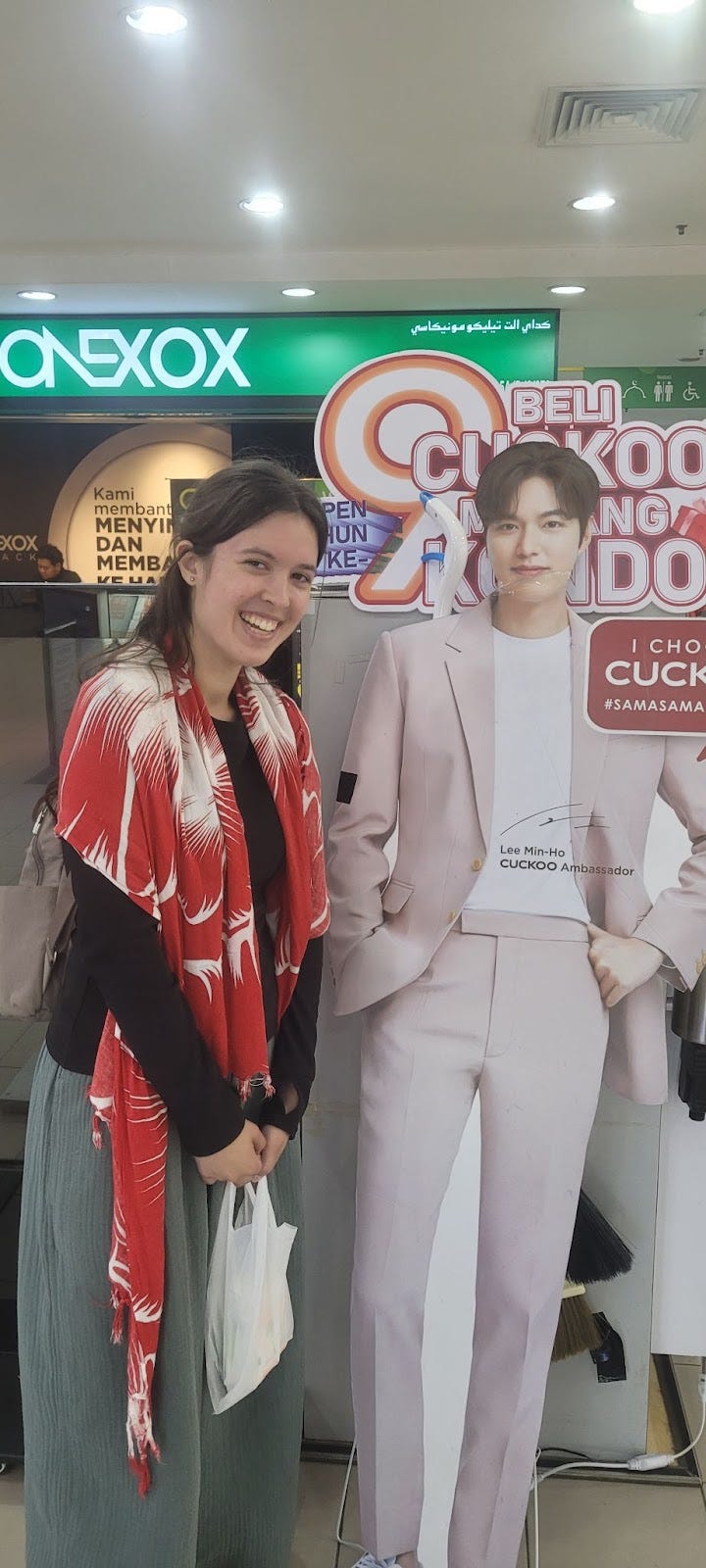
Visiting A Vietnamese Refugee Cemetery
After stocking up on goodies, Olive-nim had arranged for us to visit the local cemetery where many Vietnamese Boat People refugees were buried. Our guide explained to us that cemeteries here were organized by religion and ethnicity, with the Buddhists, Christians, Muslims, Chinese, and Malay buried in their respective cemeteries. Due to the refugee camp being located right next to the town of Kuala Terengganu, many Vietnamese refugees were buried in the local cemetery in their own respective plot of land.
Seeing the many graves of those passed while seeking freedom and safety was a somber moment, made more significant with our family’s Vietnamese heritage and personal experience with escaping persecution.
Sol: Though I am not Vietnamese, I really appreciated being able to visit the cemetery and pay my respects to those who died in the pursuit of a better life, especially given the significance this location held to Dang-Huy and his family. Coming from a family of Cuban-American immigrants, I grew up hearing my grandma's stories of fleeing her country. These stories, alongside what I've heard of Mama-nim and Baba-nim’s experiences, played through my mind during this visit. I felt so blessed to have the privileges their sacrifices afforded me, and a deep heartache that many refugees of the past and present day alike die while fleeing without their name and history memorialized.
Who are the Vietnamese Boat People?
TW: Death, disease, SA, torture, trauma
Disclaimer: This contains personal accounts of what my (Dang-Huy’s) family experienced. While these things did happen, and I have many feelings about the communist regime of the past, I am not commenting on the current regime in Vietnam. Things are very different nowadays in Vietnam.
The term Vietnamese Boat People (Thuyền nhân Việt Nam) refers to Southern Vietnamese refugees who fled their country via boat in the mid-1970s to 1980s due to threat of economic instability, “re-education camps”, or hard manual labour in the jungle to clear for new development. The boats they fled on were small and overcrowded, with no space for any belongings. However, when faced with the choice between the chance of torture, poorness, and death staying in Vietnam or the chance of death, economic opportunity, and the potential of safety in another foreign country, many chose to try to brave the boats. Along the way, many died from starvation, disease, or were murdered or raped by pirates.
Dang-Huy: My father experienced some of the worst of both worlds and made some impossibly difficult decisions. When Saigon fell, my dad’s family were set to escape by helicopter as my grandfather was an important military man. My dad stayed behind and my grandparents could not make it onto the helicopter, while the rest of his siblings made their escape to America, parentless. My grandfather was forced into a concentration camp where he was treated horribly and ate dirt and trash to survive, causing him to eventually die from stomach cancer. My father was sent to prison by association, and later forced to work hard manual labor in a “New Economic Zone” clearing out jungles. He eventually made his escape, leaving behind my grandmother who died alone years later. He still feels guilty about it today. As a boat person, he had barely survived the boat to Pulau Bidong, having contracted Hepatitis C, braving the pirates, starvation, and seeing fellow boat people die next to him. It’s incredible that I am just one generation descended from those who endured such trials, and I have lived such a relatively comfortable life full of privilege.
A Spooky, Scary, Sandy Sleepless Night
Emotional from the cemetery, we headed off to our accommodation that was advertised as a large mansion resort on a beach. Olive-nim chose to stay here as it was very close to the docks where we’d charter a boat. As we drove on into the rural roads of Terengganu, our guide started “joking” about how we should be concerned about our accommodation as it was haunted. Perhaps this situation fell victim to cultural misunderstandings, but we started to feel uncomfortable as he continued to prattle on with his jokes despite us asking him to be serious and not try to instill fear into us.
Sol: With my vivid imagination, I don’t need any external assistance from anyone, jokes or otherwise, about spooky happenings. I think this situation was made worse by the fact that all of our family on edge about visiting the island tomorrow and the emotions that were sure to surface.
Feeling ill at ease, we arrived at our house by the shore. The house was cloaked in the darkness of the night and stood tall and ominous. As our guide turned into the lot, Dang-Huy quickly alerted him to the presence of sand a few meters in front of the van. “Turn left! There’s a gravel lot to the left,” he urged. Alas, his words fell on selectively deaf ears as our guide confidently stated that it would be fine as we drove forward onto the sand… and yep, we immediately got stuck. As you visualize the situation, keep in mind that our vehicle was a large seven-seater van. This meant it was delightfully heavy and low to the ground. Its wheels spun incessantly as we tried to get back to the gravel road. We were out of luck. As the night continued to draw on, we unpacked the car as we waited for our guide’s friend to show up with his pickup truck to tow the guide’s massive van out. However, even the pickup truck could not pull out the massive van, so Dang-Huy and Baba-nim had to manually assist pushing the van out. After an hour, they were victorious! Their efforts of using bricks under the car's wheels to create traction combined with the pickup truck pulling the van out of the sand seemed to do the trick. Ugh, definitely not an experience we’d like to relive.

Dang-Huy: I later asked the guide why he ignored my warning about the sand. He simply responded that he thought “it’d be fine”. In what world would anyone willingly drive a van like that into any sandy beach and think it’d be fine????
Regrettably, the evening somehow still had room to deteriorate.
With our guide’s words of ghostly presence in the back of our mind, we took a quick look around the house and decided to unwind with a walk along the beach. According to both the house’s groundskeeper and our guide, the beach was also haunted. Great. The night sky stretched overhead with clouds obscuring any comfort of the stars. Waves lapped hungrily on the sand as we walked towards the shore. With the beach being in a rural area, the only lights came from our phone flashlights and the moon’s rays desperately trying to break through the clouds. It was eerily tranquil. No one else was in sight, yet (for Sol) there was the distinct feeling of not being alone.
As we turned in for the night, we discovered a few issues with the accommodation. Firstly, there was no toilet paper in either bathroom. Thankfully, Sol had a gut feeling to purchase extra tissues at the grocery earlier, so we were covered until the groundskeeper could bring us some. Trying to focus on getting ready for the night, the two of us looked into our bedroom. We would be sharing a room while Olive-nim, Mama-nim, and Baba-nim had a room across the landing of the second floor. Our room had four walls, a bed, a healthy spread of dust, and no ceiling. Well, rather it had no individual ceiling and instead shared the exposed beam roof with the rest of the house.
With no A/C or glass windows present, the owner’s instructions stated to keep the shutters closed. With mosquitos on the brain, Sol checked to ensure the shutters and screens were closed, only to discover that there were actually no screen-windows at all covering the openings. This meant that the only mosquito proofing we had for the evening was a mosquito repellent coil and our bug spray cream. Sticky with sweat from the humid heat of Malaysia, we took a few breaths to avoid a mental breakdown before heading to a very cramped and rusty shower stall. Luckily, there was some warm water, though the washroom sink didn’t drain properly and a single giant mosquito was flying around.
Glad to be done with washing up, we wearily headed to bed, hoping to find sanctity from surroundings in our dreams. But, wait…on the pillow… was that… lizard poop? Oh. Oh crap. Yep, it looked like some local lizards decided to bestow their feces on our pillows and that since their defecation, the room’s bedding had not been cleaned. With only a few brain cells holding us together, we did our best to clean off the pillow and put Sol’s scarf over where our heads would lie. We later heard that the other bedroom was much better.
Sol: Before sleeping, I turned on my e-sim’s data - which I usually try to conserve for emergencies - to watch some Golden Girls. I just needed some comfort. This was honestly the most miserable night I experienced throughout all of our travels (though another does come close, but you’ll have to wait and read about that in the publications to come).
The night drew on as we flitted in and out of consciousness. The old mansion’s creaking and the chattering of bizarre jungle creatures at our window would wake us. Then exhaustion would come and we would fall back into the shallow waters between awareness and sleep. Throughout the night, an uneasy sensation would creep into our hearts with the uncomfortable feeling of something in the house.

We woke at dawn, faces bitten by mosquitos and bodies weary from lack of sleep. We washed up as best as we could and stepped outside, grateful to see the rising sun.
Today was the day we were going to the former refugee camp. We needed energy and to have our wits about us so that we could appreciate the emotional experience that was to come. However, we were both still very grumpy as we loaded ourselves into the car, and if we're being truthful, seeing our guide did not help our mood improve whatsoever. Worse, we still had another night booked at our current accommodation, and though Olive-nim tried her best to rally our spirits, neither of us were feeling motivated to return for another spooky, sleepless night.
We did our best to focus on the day trip ahead to Pulau Bidong as the van pulled into the boat port. We sat around tourists heading to more popular island destinations as our guide took care of renting the boat. Finally, we were waved over to a small vessel and anxiously made our way over with our backpacks. Though the mansion was already a huge challenge, we would discover a new set of tribulations, emotional discoveries, and adventures on the overgrown, lost island!
Grumpy and unsure of what lies ahead,
Dang-Huy and Sol
Next time in the Adventures of Chickpea and Carrot:
Emotions overflow with a return to Pulau Bidong, where we all shed tears of loss
Island ruins, once overpopulated, now reclaimed by the jungle
Monitor lizards, sharks, mosquito swarms, oh my!
How will we survive the return to the house of hauntings and mosquitos??





